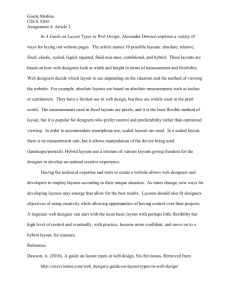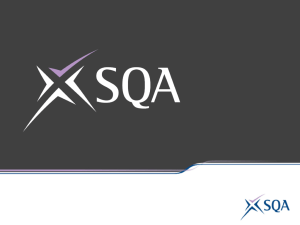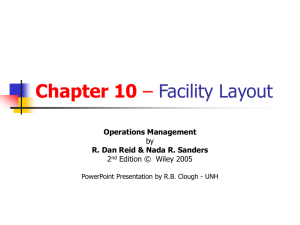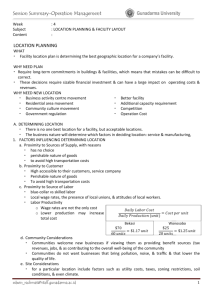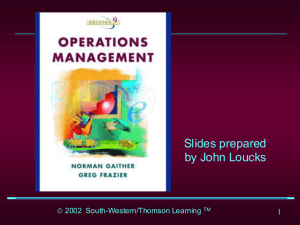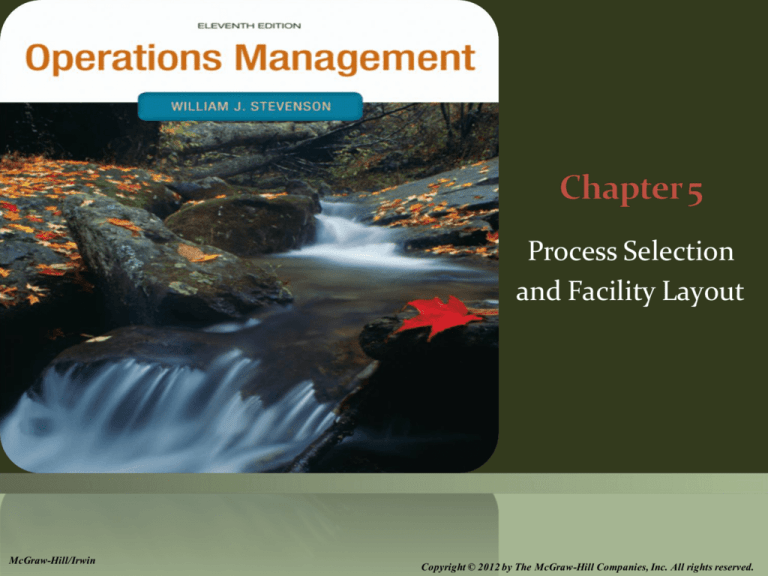
Process Selection
and Facility Layout
McGraw-Hill/Irwin
Copyright © 2012 by The McGraw-Hill Companies, Inc. All rights reserved.
You should be able to:
1.
Explain the strategic importance of process selection
2. Describe the influence that process selection has on the
organization
3. Compare the basic processing types
4. Explain the need for management of technology
5. List some reasons for redesign of layouts
6. Describe the basic layout types, and the main advantages and
disadvantages of each
7. Solve simple line-balancing problems
8. Develop simple process layouts
Instructor Slides
6-2
Process selection
Refers to deciding on the way production of goods or
services will be organized
It has major implications for
Capacity planning
Layout of facilities
Equipment
Design of work systems
Instructor Slides
6-3
Instructor Slides
6-4
Instructor Slides
6-5
There is increasing pressure for organizations to
operate sustainable production processes
According to the Lowell Center for Sustainable
Production:
“Sustainable Production is the creation of goods and
services using processes and systems that are: nonpolluting; conserving of energy and natural resources;
economically efficient; safe and healthful for workers,
communities, and consumers; and, socially and
creatively rewarding for all working people.”
Instructor Slides
6-6
FMS
A group of machines designed to handle intermittent
processing requirements and produce a variety of
similar products
Have some of the benefits of automation and some of the
flexibility of individual, or stand-alone, machines
Includes supervisory computer control, automatic material
handling, and robots or other automated processing
equipment
Instructor Slides
6-7
CIM
A system for linking a broad range of manufacturing
activities through an integrated computer system
Activities include
Engineering design
FMS
Purchasing
Order processing
Production planning and control
The overall goal of CIM is to link various parts of an
organization to achieve rapid response to customer
orders and/or product changes, to allow rapid
production and to reduce indirect labor costs
Instructor Slides
6-8
Layout
the configuration of departments, work centers, and
equipment, with particular emphasis on movement of
work (customers or materials) through the system
Facilities layout decisions arise when:
Designing new facilities
Re-designing existing facilities
Instructor Slides
6-9
Basic Objective
Facilitate a smooth flow of work, material, and information through the
system
Supporting objectives
1. Facilitate product or service quality
2. Use workers and space efficiently
3. Avoid bottlenecks
4. Minimize material handling costs
5. Eliminate unnecessary movement of workers or material
6. Minimize production time or customer service time
7. Design for safety
Instructor Slides
6-10
Product layouts
Process layouts
Fixed-Position layout
Combination layouts
Instructor Slides
6-11
Service layouts can be categorized as: product,
process, or fixed position
Service layout requirements are somewhat different
due to such factors as:
Degree of customer contact
Degree of customization
Common service layouts:
Warehouse and storage layouts
Retail layouts
Office layouts
Instructor Slides
6-12
The main issue in designing process layouts concerns
the relative placement of the departments
Measuring effectiveness
A major objective in designing process layouts is to
minimize transportation cost, distance, or time
Instructor Slides
6-13







